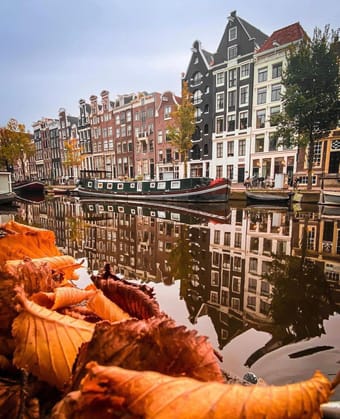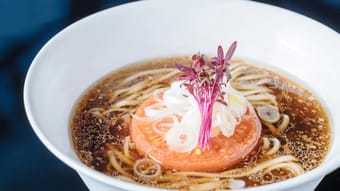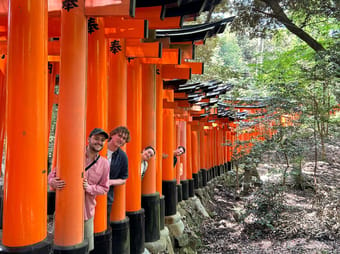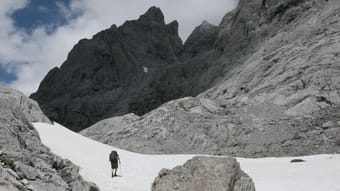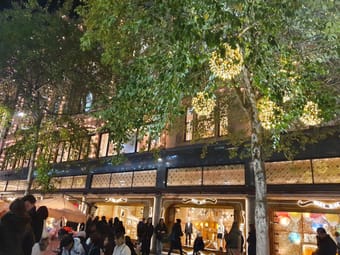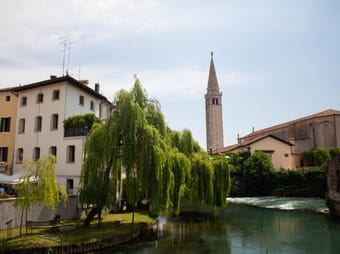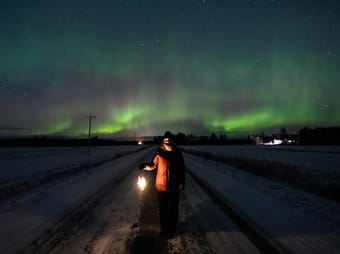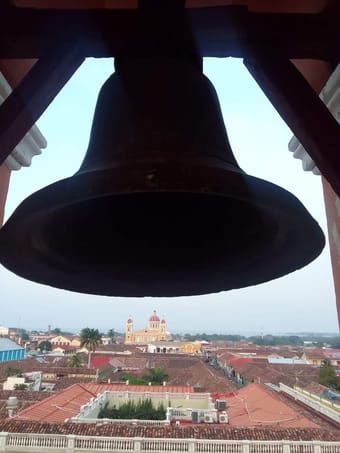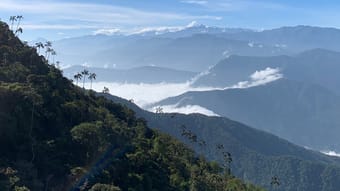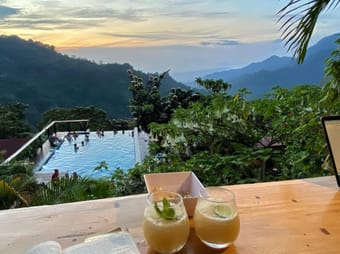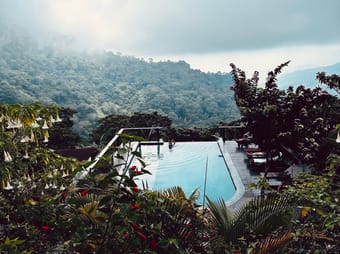Results for Masada
Getting ready for your family travels in the Middle East?
You can take your kids to the beach, hike lush nature reserves, explore ancient grottoes, jump into cave pools, taste and smell the food at open-air markets, ride on camels in the desert, and much more.
Israel has so much to offer, from ancient history, rich culture, nature reserves, and stunning desert landscapes to vibrant restaurants and cafes.
In this guide to visiting Israel either with kids or without, here you will find all the important things you’ll want to know about Israel when planning your trip.
Budget • Luxury • Faith • Shopping • History • Architecture • Nature • People & Culture • Photography • Mountain • Beach • Coffee • Road Trip
$15.00
2
This guide takes you on a sassy tour of the city of the canals or the “Venice of the North” - with a bit of something for everyone!
The city is famous for its arhitecture, art museums and traditions that are well kept alive and praised. But it is also famous for cannabis-serving coffeeshops (this guide provides a list with such venues), red-light district, quirky bars and bizarre museums.
So, whether on foot or by bike/boat, take this guide & stroll around this outstanding city in search for fun, food, souvenirs and all those Dutch vibes that you heard so much about.
When it comes to traditional food, be sure to try:
- Haring or 'Hollandse Nieuwe' (Dutch new herring), probably the most famous Dutch food. Pickled herring is a delicacy in Holland. The raw herring is served together with chopped raw onions and gherkins.
- Stamppot, an old dish of mashed potatoes combined with root vegetables, like turnip, carrot and onion, but it can also include dark, leafy greens like kale/spinach (make sure you order it the traditional way, with smoked sausage).
- Erwtensoep, a thick split pea soup;
- Bitterballen similar to a scotch egg, they are balls of finely chopped beef or veal that are seasoned with a mixture of spices, then rolled in bread crumbs and deep fried.
Also, make sure you try out some desserts:
- Poffertjes, small pancakes, baked in an iron skillet and traditionally served with melted butter, dusted with icing sugar
- Pannenkoeken, another traditional sort of pancakes
- Oliebollen ‘oil spheres' are balls of dumpling batter fried in hot oil and later sprinkled with icing sugar.
Highlights:
🌷Dutch tulips - It was in the 16th century that tulips were imported to Holland from the Ottoman Empire. In no time, tulips became the most sought-after commodity in the entire Netherlands, after Carolus Clusius wrote what's considered the first major book about the flower. In the early 1600s, professional cultivators of tulips began to refine techniques to grow and produce the flowers locally in Holland, establishing a flourishing business sector that has persisted to this day.
The tulips mostly bloom during the spring season, from mid-April to mid-May, in Amsterdam. The Tulip Festival will begin on March 23rd and go on till May 14th, 2023
👡 Klompen - Dutch clogs are a type of footwear made in part or completely from wood. The iconic footwear of the Netherlands were the shoes of choice for Dutch laborers of centuries past. The wooden slip-ons were sturdy, cheap and—when stuffed with straw—cozy and warm. The first Dutch clog is dated from the year 1230. The shoe is deeply ingrained in Dutch culture and some people in rural areas still wear them today!
🚲 Dutch bikes - are a style of urban commuting bikes that have been used in the Netherlands for decades and have grown in popularity in cities around the world. Dutch bicycles are upright or “sit-up” style – with taller frames than typical bicycles. This position allows for very good visibility and great comfort. A popular form of Dutch bicycles is the Omafiets (translates to Grandma's bike).
🗼 Dutch windmills - were built originally to pump the water out from the land because the Netherlands is so flat and below sea level. With the land always getting flooded, farming was almost impossible, hence the need to force out the water by means of the windmills.
🧇 Stroopwafel - the most classic of all Dutch sweets and a perfect gift from Holland - literally means “syrup waffle” and it’s a round crunchy waffle with chewy caramel filling. The correct way of eating it is: put it on your coffee or tea cup and wait for a minute until the caramel melts and the waffle warms up – it enhances its flavour and makes it taste as fresh from the oven. Delicious!
🧀 Dutch cheese - especially Gouda, Edam and Maasdam, well known and exported all over the world. Apart from the classics, try some really special ones: a turquoise-coloured cheese with lavender, pink-coloured cheese with red pesto, champagne gouda or even… coconut gouda! A typical cheese from Amsterdam is Old Amsterdam, exceptional premium aged gouda cheese.
🥃 Genever (also called Jenever) - is the traditional liquor of the Netherlands, from which gin has evolved. Some tasters say the flavor of this spirit is similar to white whiskey. Oude (old) genever is the traditional style, with a malty botanical flavor. Jonge (young) genever is a newer recipe with a cleaner taste, more similar to vodka.
There are several genever distilleries in Amsterdam, each with their own secret recipes.
Solo Female • Groups • Adventure • Architecture • Art • Foodie • History • Shopping
$5.00
23
A digital travel guide containing vegan, vegetarian, macrobiotic, organic, and gluten-free restaurants in Japan.
Majority of them are located in Tokyo, but I've also included some excellent spots in Kyoto and Fukuoka.
🌟 I’ve organized each restaurant with a convenient category that explains what type of food they serve
🌟 I’ve also included links to their websites/social media.
This guide contains 50 locations with many varieties of food, including:
🍰🍩 desserts
🍜🥢 ramen
🌮🍔 international cuisine
🍛🍱 Japanese food
☕️🥪 cafes and bakeries
💖💰 higher end restaurants for a special meal
📌 This guide also includes a zero-waste Guesthouse that has an earth-friendly plant-based café and bar, that sells by weight, without trash.
💕✨ I've also created a FREE vegan and vegetarian Japanese word and phrase list to help you navigate Japan, so you can just show people your phone, and point.
I’ve also including a handy Gluten Free phrase and help guide, too.
My hope is that even if you don't purchase my guide, these free phrase lists will at least help you! ✨
☆︶︶︶︶☆ ︶︶︶︶☆
Helpful Terms for Vegan and Vegetarian travellers:
The more commonly used terms:
vegetarian: ベジタリアン (beh-ji-tarian)
vegan: ヴィーガン (vui-gan) OR ビーガン (bee-gan)
The more traditional terms:
Buddhist vegan: 完全菜食主義者 (kanzen saishoku shugisha)
vegetarian 菜食主義者 (saishoku shugisha)
☆︶︶︶︶☆ ︶︶︶︶☆
NOTE: Even if you’re vegan, it’s good to start with this phrase, “beh-ji-tarian des” (I’m vegetarian) since it is already rare to be a vegetarian in Japan.
Saying you’re vegan will go over many people's heads, so if they say that they "can’t serve a vegetarian", they definitely can not serve a vegan.
Some helpful phrases you can keep handy on your phone:
I don’t eat meat, seafood, eggs and dairy products
肉とシーフードと卵と乳製品を食べません
(o-niku, shifudo, tamago, to nyūseihin wo tabemasen)
I don’t eat pork
豚肉を食べません
(buta niku wo tabemasen)
I don’t eat chicken
鶏肉を食べません
(tori niku wo tabemasen)
I don’t eat fish stock
魚のだしを食べません (sakana no dashi wo tabemasen)
I don’t eat eggs
卵を食べません
(tamago wo tabemasen)
I don’t eat cheese
チーズを食べません
(chizu wo tabemasen)
☆︶︶︶︶☆ ︶︶︶︶☆
How to express having an allergy:
I am allergic to shrimp
エビのアレルギーがあります
(ebi no arerugi ga arimasu)
For example:
I am allergic to _____________________
_____________________ の アレルギーがあります
_____________________ no arerugi ga arimasu
☆︶︶︶︶☆ ︶︶︶︶☆
GLUTEN FREE TIPS:
Many Japanese dishes contain soy sauce and/or miso, and most of them contain gluten.
I am allergic to wheat
小麦アレルギーです
(Komugi arerugi desu)
麩 質 Fushitsu is the Japanese word for gluten
グ ル テ ン sometimes it is written in Katakana, as “gu-ru-ten”
Things to avoid:
小麦, 小麦 粉
Komugi is wheat, komugiko is wheat flour.
麦 Mugi is barley, usually in mugicha, barley tea. Or rye, called rye-mugi (ライ麦).
醤 油 Shoyu, or soy sauce
味噌 Miso paste
水 飴 Mizuame, or malt syrup, and barley malt syrup are in many sweets
Helpful Phrases:
I cannot eat food that contains gluten. So I cannot eat anything made with wheat, rye or barley. That means that I cannot eat soy sauce which contains wheat, or miso that contains wheat.
私はグルテンを含む食品が食べられません。小麦・大麦・ライ麦が使われているものは全部です。そのため、小麦を原料としている醤油や味噌もいっさい口にできません。
I have a serious disease called celiac disease, so that I cannot eat food that contains gluten. I cannot eat anything made with wheat, rye, or barley. I cannot eat soy sauce which contains wheat or miso that contains wheat.
私は、グルテンの摂取によって発症する「セアリック病」という深刻な病気をもっています。そのため、小麦・大麦・ライ麦が使われている食品は食べられません。小麦を原料としている醤油や味噌もいっさい口にできません。
Does this contain wheat?
これは小麦を使っていますか。
Does this contain barley?
これは大麦を使っていますか。
Does this contain soy sauce?
これは醤油を使っていますか。
When you go to a chicken grilling shop, they can dip it in a sauce which contains soy sauce, but you can ask them to do the salt sprinkled version instead:
Can you do shio-yaki (salt-flavored)?
塩だけで焼いてもらえますか。
Vegan • Gluten-free / Celiac • Vegetarian • Female Solo • Couples • Foodie • Vegan • Gluten Free • Vegetarian • Cafes and Bakeries • Japanese Food • Higher End Cuisine • Sustainable/Eco • Coffee • Wellness
$15.00
4.8
(4)
127
Guatemala is THE most underrated country. It ranks in my top 3 favorite countries of all time and is a MUST if traveling through Central America. This list includes all of the best activities, restaurants, beaches, and bars so you won't miss out on a thing.
Backpacker • Digital Nomads • Female Solo • Vegetarian • Couples • Adventure • Foodie • Budget • Outdoors • Slow Travel • People & Culture
$5.00
7
Japan is a wierd and wonderful place thats brilliant to travel, but lets be real it can be tough for a vegetarian. During my 2 week trip I discovered that with a bit of planning ahead and knowing the right spots you can eat as good as the carnivorous!
In my guide you’ll find my top tips for eating out in Japan as a veggie as well as a load of food recommendations in Tokyo, Kyoto, Osaka and Hakone to kickstart your planning.
Free
5
Seven-day trek based in refugios.
INTRODUCTION
The Picos de Europa is a region of limestone peaks reaching over 2500 metres above sea level; the highest being Torre de Cerredo at 2650 metres. The route described here is one that I hiked alone in early summer. The best time to tackle the route is between June and September. There is more likely to be snow on the high passes in early June but they are usually not to difficult to negotiate.
The Picos de Europa is not as well known as the Pyrenees or Alps and as such the hiker traffic is less and the tourist infrastructure is less developed. This makes the area feel less spoilt but it can also make it a more challenging area to explore with fewer trails and little to no signposting. Always take a map with you: the Editorial Alpina 1:25,000 maps are the best. I took these and also used the outdooractive app and downloaded the relevant map tiles. This is useful for pinpointing where you are, in what can be confusing terrain. I was lucky to have clear weather for my entire trek but I would imagine that it's pretty difficult to navigate when the cloud is down on the mountains so take a compass too.
You can stay in refugios every night on this hike and wild camping is permitted above 1500m; details below.
I can't recommend the Picos de Europa as a hiking destination enough. The mountains are magnificent but there are also beautiful extensive woodlands at lower altitudes, as well as meadows full of wildflowers and butterflies. The juxtaposition between the stark limestone peaks and the gentle greenery of the valleys is beguiling.
DISCLAIMER: Please note that hiking in the Picos de Europa is not risk free. It is a very challenging area in which to hike. I accept no responsibility for any accidents you may experience while hiking this route. You are responsible for your own safety. Some of the dangers and difficulties are listed a little further down this guide.
HOW BUSY?
Unlike some of the more well know hikes around Europe this trail is less well trodden and as such the trail can be quite hard to follow at times, and at other times there is no trail! Despite this, refugios, being small, fill up fast (see below).
REFUGIOS
The hike is made easier if you stay in the staffed refugios where you can recharge your metaphorical batteries. Accommodation at these mountain huts is in communal dormitories and you will need to bring your own sleeping bag. It's best to book ahead as they are often full throughout the summer. Prices are around the €12-17 mark and they also do affordable meals (breakfast, picnic lunch and dinner).
There is also a handful of unstaffed, very basic mountain shelters with no services and no beds but these can be a good option in an emergency. Most of the refugios only accept cash so be sure to take plenty with you before you set off as there are no ATMs! All the refugios on the route are listed in the route description below with website links.
WILD CAMPING
Camping is only permitted at 1500m above sea level or higher. There is not much water anywhere above this altitude so be sure to fill up when you get the chance (at refugios) before camping in a remote spot.
POSADA DE VALDEON
This beautiful village tucked in the valley between the Macizo Central and Macizo Occidental is a lovely place to wander for a few hours. At the centre of the village there are a number of restaurants and bars and a small square with a water fountain. If you need somewhere to stay before or after the trek you'll find hotels, guest houses and a youth hostel. There is a hotel recommendation and link in the route description.
In the centre of the village is a pharmacy should you need any blister plasters! And on the road to the west of the village is the National Park office where you can find information about hiking and anything else to do with the national park.
GETTING THERE
From the UK there are Ryanair flights to Oviedo (Asturias airport) from London Stansted. A bit further afield you can get flights to Bilbao and Santander from the UK and the rest of Europe. Getting from the airport is a little complicated but there are buses to Posada de Valdeón from Oviedo changing in Cangas de Onis. The journey takes about 4.5hrs. There are also buses from Santander and Bilbao changing in Llanes and Riaño with the journey taking around 15hrs from Bilbao.
An easier but more expensive option is to get a taxi. You could also hire a car but of course you will have to leave the car sitting idle in Posada de Valdeón while you do the hike.
FLORA & FAUNA
This area of northern Spain is fantastic for wildlife. At lower elevations the beech and sessile oak woodland stretches for miles over rolling hills. This is part of the boreal forest that once would have covered much of Europe and is home to roe deer, wild boar, red squirrels, pine martens and brown bears.
In the skies you have a good chance of seeing griffon vultures, golden, booted and short-toed eagles, black kites and peregrines. Of the smaller passerine species the Picos are home to red-backed shrikes, black redstarts, spotted flycatchers and black woodpeckers.
But it's the wildflowers in the meadows and on the woodland edges that are the real joy and most easily appreciated. Vetches, cinquefoils and orchids create a colourful patchwork of colours with butterflies bringing the whole scene to life. Look out for swallowtails, fritillaries and hairstreaks.
NAVIGATION
Navigation is difficult as the terrain can be confusing and in many places there is no trail whatsoever. Take a map (1:25K Editiorial Alpina maps are the best), compass and GPS and know how to use them. It's also a good idea to download the map on a relevant map app. I used the outdooractive app but others are available.
WEATHER
Thunderstorms are common, usually in the afternoon and these can be particularly dangerous high up in the mountains. It's best to hike early and get to a refugio by lunchtime if there are afternoon thunderstorms in the forecast. The weather in this part of Spain is very changeable as it has a maritime climate. Rain and thick fog are possible but equally long periods of warm sunshine are not unusual. The best advice I can offer is to be prepared for anything. Pack suncream and a sunhat but don't forget your waterproofs either.
FALLING ROCKS
Rock falls are not unusual as chamois and other hikers can dislodge rocks above you. Getting caught in a rockfall is not so common but not impossible. Be aware and if you see rocks heading your way, and cannot find cover, crouch down on the floor and pull your rucksack over your head and back.
DRINKING WATER
There is very little running water as these mountains are mostly comprised of permeable limestone. You will need to take plenty of water with you each day (I packed three litres every day and usually drank it all). You can fill up at the refugios and there are a few fountains / fuentes although most of the ones I saw marked on the Editorial Alpina map were dry when I found them.
THE SUN
Sunburn and sunstroke are both real dangers and there is little shade. Keep hydrated and wear a sun hat that covers your neck.
TERRAIN
In some places you need to scramble up steep rocky sections. You will need to have experience in this kind of terrain and have a head for heights! The terrain is very rocky and uneven at higher altitudes so you will need strong, sturdy footwear. Trekking poles are also invaluable in providing support and helping you across and up awkward sections. There is also a lot of steep ascent and descent on this route so you will need to be reasonably fit.
DANGEROUS ANIMALS
On many parts of the trail you will encounter cows. In my experience they are very docile and used to trekkers so they shouldn't be of any concern. You may also find flocks of sheep and while these aren't dangerous they are often accompanied by shepherd dogs which have been trained to keep intruders away from the flock. They can be quite intimidating when they start barking at you. If you see sheep ahead it is best to give them a wide berth, even if this means veering away from the trail for a while. If you walk directly towards or through a flock of sheep you risk agitating the shepherd dogs.
Bears are not common in the Picos de Europa but there are bears in other parts of the Cantabrian Mountains, notably Somiedo National Park, not far to the west, and there is always the possibility of seeing an itinerant bear wandering through the Picos. Eurasian brown bears are not as big nor aggressive as the grizzly bears of North America so you shouldn't worry too much about an encounter. It's extremely unlikely you will see one so if you do, consider yourself very lucky.
Wild boar are common in the woodlands at lower altitudes. They are not as aggressive as some people will tell you and tend to be nocturnal. I did see some in the daytime near Vegabaño. As soon as they saw me they ran away, crashing through the undergrowth. As with any large animal it's best to simply give them plenty of space to move away from you.
I hope none of this advice puts you off hiking in the Picos de Europa. Yes, it's a challenging mountain area but the rewards for hiking here are great. Enjoy the hike!
Adventure • Nature • Slow Travel • Sustainable/Eco • Mountain • Camping
$12.00
3
Ever heard folks complain about finding good vegetarian food in Spain? Well, my week in Barcelona proved them wrong. Amidst stunning architecture, I stumbled upon some of the best meals of my journey. This guide won't cover traditional veg Spanish dishes, but it will help you find delicious food while enjoying Barcelona's beauty.
Vegetarian • Vegan • Families • Groups • Couples • Foodie • People & Culture
Free
2
My family and I visited Cartagena in January of 2023 for a month and loved every minute of it. After taking a walking tour with a local guide, Anita, I sat down with her to ask her more about her city. I wrote this local guide with her recommendations.
Included in the guide are:
🏔️ - Top Attractions
👨👩👦👦 - Family-Friendly Activities
🍽️ - Restaurant and Bar Recommendations
🏨 - Places to Stay
Couples • Family • Adventure • Architecture • Foodie • Outdoors • People & Culture • Photography • Relaxation
Free
1
Julia 🌏 Female Solo Traveler
Available for hire
5 unvergessliche Tage in Rovaniemi, Finnisch Lappland - Winter Edition ❄️
Ein Besuch beim Weihnachtsmann, die aufregende Jagd nach Polarlichtern oder eine rasante Huskyschlittenfahrt durch verschneite Wälder - das und noch so viel mehr kannst du in Rovaniemi innerhalb weniger Tage erleben. 🎅🏻🐶
In diesem Guide findest du einen genauen Plan für deinen Aufenthalt, inkl. Packliste, Hotelempfehlungen, hilfreicher Apps und natürlich einiger wichtiger Solo Travel Tipps.
Alle Inhalte sind meine persönliche Empfehlung aufgrund meiner eigenen Reise nach Rovaniemi. Zusätzlich habe ich dir auch noch ein paar alternative Ideen aufgelistet. 🤫
Viel Spaß mit deinem Reiseführer für 5 magische Tage im finnischen Winter Wonderland. 🇫🇮🦌⛄️
Female Solo • Car-free • Backpacker • Family • Groups • Couples • Adventure • Outdoors • People & Culture
$15.00
1
Whether you're seeking the adventure of Volcano boarding, interested in tasting the finest Rum, climbing to the top of Cathedrals or simply watching the sky turn purple and pink whilst you lay on the white sand beaches, Nicaragua has something for you.
Backpacker • Couples • Digital Nomads • Family • Female Solo • Vegan • Vegetarian • Adventure • Architecture • Art • Budget • History • Outdoors • People & Culture • Photography • Relaxation • Slow Travel
$8.00
1
𝓜𝓪𝓻 𓆏 Slow traveller
Available for hire
Discovering Minca: Your Ultimate Travel Guide for Skipping Touristy Spots, and Uncovering Hidden Accommodation Gems
Minca holds a special place in my heart; it was a trip to the Sierra Nevada de Santa Marta that sparked a profound realization of my fortune and blessings to have been born in the beautiful Colombian territory turning me into a fervent explorer of this region.
Having visited Minca multiple times, I feel equipped with the best recommendations to make this journey a magical and unforgettable experience. Experiencing Minca in this way has led me to delve into uncommon adventures as have never set foot in the tourist spots that pop up on Google. I've never been to Pozo Azul or the Marinka waterfalls and honestly, I feel like I'm not missing out on anything. This is why i want to share with you my favorites and i hope you like it as much as i do.
Discover the best of Minca with my guide! Find top accommodations in town and nestled in nature, uncover hidden natural gems, savor incredible food, and enjoy the best sunset spots. Plus, get reliable transportation contacts and thrilling tips for exploring Cerro Kennedy for adventure lovers.
Backpacker • Car-free • Couples • Digital Nomads • Vegetarian • Vegan • Female Solo • Boutique • Outdoors • Relaxation • Romantic • Photography • Slow Travel • Wellness • Adventure
$5.00
1
Let us explore gluten free Gothenburg! I am living here since a year now as a celiac and will link the restaurants where I had good gluten-free experiences with so far.
This map contains places for lunch and dinner. If you are looking for something sweet, please check out my "Gluten Free Fika in Gothenburg" map! The guide includes a mix between "real" restaurants and fast food restaurants. It is focused on more affordable locations and leaves out luxurious and expensive places.
Usually, in Sweden you can ask for a gluten-free alternative and it is common that they have gluten-free burger buns or pizza dough to offer. Still, it is always necessary to explain everything has to be gluten-free even regarding contamination. I am thankful for the general offer of alternatives, yet I prefer to visit places where I can eat more than the obligatory gluten-free burger bun ;-). Therefore, I recommend only the locations where I was satisfied with the gluten-free possibilities!
Furthermore, I will not link restaurants in the charming old town district of Haga. There are several restaurants, but I personally found them very touristy and therefore prefer to walk through it but then visit other places to eat.
And now enjoy :-)
Gluten-free / Celiac • Couples • Female Solo • Vegetarian • Foodie • Budget • Slow Travel
Free
1
Ask ThatchGPT

